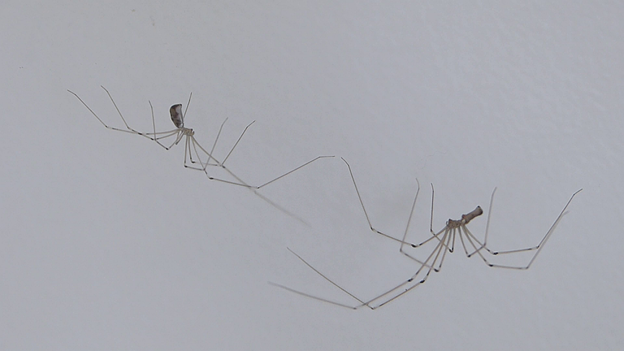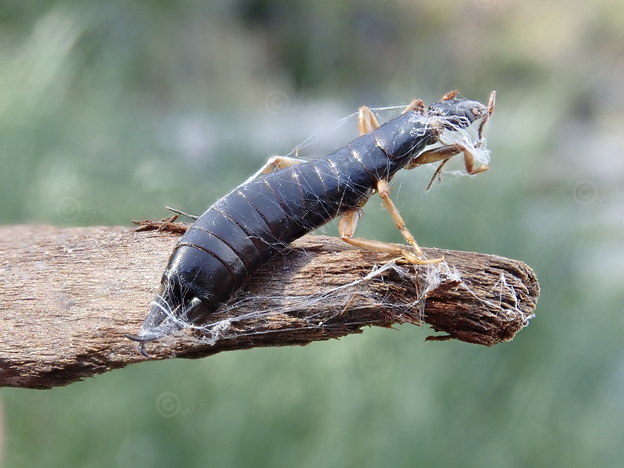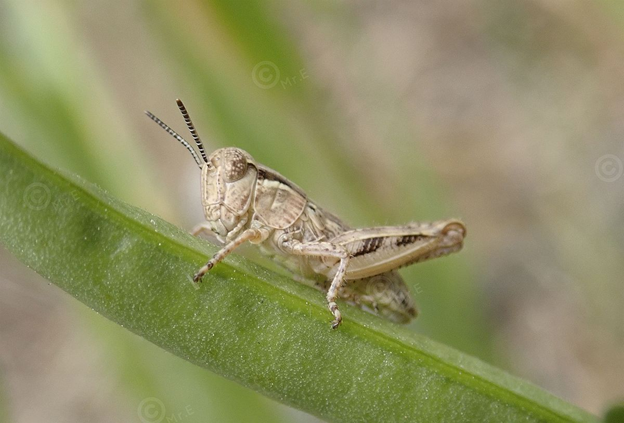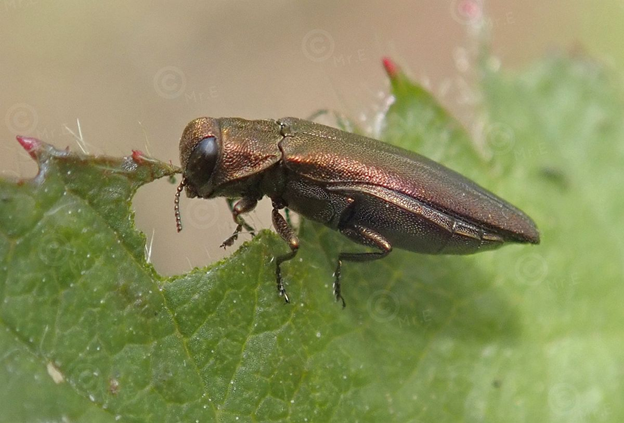June 8
2020 June 8
Jochen Möhr writes from Metchosin: In the corner of the room behind my computer resides a spider. I presume it is Pholcus phalangioides. I have watched it for days. At one time it caught a Venusia obsoleta/pearsalli. It took it some 30 minutes to subdue it. Then it consumed it and since the next morning, the moth’s remains are in the corner of my desk.
Then yesterday, I saw another slightly larger but similar spider with a less rounded abdomen approach across the wall. I presume the newcomer was a male and the well fed resident a female. [But see Dr Bennett’s comments below.] The newcomer went directly towards the resident and they started to touch each other with their long front legs. I assumed it was beginning courtship and I was reminded of Mozart’s “Reich mir die Hand, mein Leben!” [Là ci darem la mano!]
But then the resident one turned around and rather speedily went off. It is now under the ceiling some 1 1/2 meters above the newcomer, who has taken up residence where the other used to be.
Libby Avis asks: On a less romantic note, is this one of the species where the male has to be careful not to be eaten by the female? Jeremy Tatum replies: Not sure, but recall that on May 11 Jochen had a photograph of one eating the formidable spider Eratigena.
Dr Robb Bennett writes: The one on the right is definitely a mature female. Not so sure about the beast on the left – could be a male but I can’t tell for sure and I think it may “just” be an immature specimen. Males usually look much more spindly. Perhaps Jochen can obtain a close-up of that spider’s head region that would enable us to tell if it’s a mature male.

Pholcus phalangioides (Ara.: Pholcidae) Jochen Möhr
But after looking at Jochen’s great movie (link below, set to Mozart’s Là ci darem la mano, very rough free translation: “Let us hold hands”, Zerlina on the right, the Don on the left) Robb writes: Well, it certainly looks like courtship behaviour.
https://www.youtube.com/watch?v=-r4F7CFijxs&t=15s
Mr E sends a picture of a Maritime Earwig having rather a lot of trouble with spider webbing on driftwood at Devonian Park, June 7.

Maritime Earwig Anisolabis maritima (Derm.: Anisolabididae) Mr E
This young grasshopper was photographed by Mr E at Portage Inlet Park. Since it’s a youngster, we have to be content with identification at genus level – thanks to Claudia Copley.

Young grasshopper Melanoplus sp. (Orth.: Acrididae) Mr E
This beetle, too, was at Portage Inlet. Scott Gilmore writes: This is a tough angle but I’m pretty sure this is from the genus Agrilus.

Agrilus sp. (Col.: Buprestidae) Mr E
Jeremy Tatum writes: Chris Jochen sent me the following link to a short spectacular movie showing hummingbirds, bees, butterflies, bats sucking nectar and pollinating plants. Not strictly within the purview of Invert Alert, but I dare say viewers will enjoy it anyway.
http://www.youtube-nocookie.com/embed/xHkq1edcbk4?rel=0
